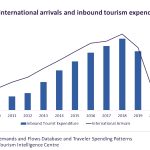
Sri Lanka is still grappling with an unprecedented economic crisis, and is expected to witness a contraction in its economic growth in 2023. The country’s economy already contracted by 7.8% in 2022 and is projected to shrink by an additional 3% this year. The challenges are related to debt restructuring and balance of payments difficulties are contributing to this economic decline. The island nation is left with $350 million of foreign currency in reserves while India has extended another $1 billion as part of its $4 billion credit line.
To support Sri Lanka’s efforts to stabilize its economy, the Asian Development Bank (ADB) emphasized the importance of implementing reform measures. These include reversing tax cuts that were implemented in 2019 and the recent approval of a 48-month loan arrangement worth about USD 3 billion from the International Monetary Fund (IMF). These measures are expected to provide crucial support to the country’s financial recovery, which is predicted to gradually begin in 2024.
The ADB’s Asian Development Outlook report for April 2023 highlights several key reforms that Sri Lanka needs to undertake. These include enhancing domestic resource mobilization, improving the performance of state-owned enterprises, strengthening public financial management, promoting private sector activities, implementing anti-corruption legislation, building strong institutions, and increasing transparency.
The Sri Lanka economic crisis can be attributed to various factors, including policy missteps, shortages of essential imports, and subsequent inflation. Achieving a successful recovery will require timely progress in debt relief and the effective implementation of the recommended economic reforms.
Utsav Kumar, the ADB’s Deputy Country Director for Sri Lanka, emphasized the importance of protecting the poor and vulnerable during the recovery process. He underscores the need for unwavering commitment to reforms in order to address the country’s internal and external imbalances.
Meanwhile, the country has witnessed some encouraging developments on tourism and remittance fronts.
Sri Lanka’s tourism industry is experiencing a significant rebound, surpassing the 400,000 mark of tourist arrivals. The country’s tourism sector has shown remarkable resilience, bouncing back after a challenging period due to the COVID-19 pandemic and the Easter Sunday attacks in 2019.The positive trend in tourist arrivals is expected to continue in the coming months, indicating a sustained recovery for Sri Lanka’s tourism industry. The month in review saw a substantial increase in arrivals, with over 23,000 tourists visiting the country in just 23 days.
The rebound is thanks to multiple factors, including the successful vaccination drive in Sri Lanka, which has instilled confidence among travellers. Implementing health and safety protocols in the tourism sector has also been crucial in attracting visitors to the country. In addition, the government’s efforts to promote Sri Lanka as a safe and desirable destination have effectively restored traveller confidence.
Furthermore, the reopening of international borders and the resumption of international flights have facilitated the return of tourists to Sri Lanka. The country’s diverse attractions, including pristine beaches, cultural heritage sites, and wildlife sanctuaries, remain significant draws for travellers.
Sri Lanka has also recorded a significant increase in foreign remittances, with the total amount amounting to $ 1.8 billion in 4 months. This data, sourced from the Central Bank, indicates a positive trend in the inflow of money from overseas. It has consistently received substantial foreign remittances, with an average monthly inflow of around US $527 million.
Several factors could potentially contribute to this phenomenon. First, Sri Lanka’s diaspora community, spread across the globe, is crucial in sending money back to their families and loved ones. In addition, economic factors, such as employment opportunities abroad, currency exchange rates, and the financial well-being of the diaspora, can influence the volume of remittances.
Foreign remittances significantly impact Sri Lanka’s economy, as they contribute to the country’s foreign exchange reserves and help stabilize the balance of payments. They also serve as a source of income for many households, supporting consumption and improving living standards.
In conclusion, Sri Lanka’s tourism industry is showing promising signs of recovery, with tourist arrivals surpassing the 400,000 mark and a positive trend expected to continue. Additionally, the significant increase in foreign remittances, reaching a total of $1.8 billion in just four months is a great sign of the country’s economic growth.
However, Sri Lanka still faces economic challenges, with a projected contraction in economic growth for 2023. The Asian Development Bank highlights the importance of implementing reform measures. These reforms, are vital for the country’s financial recovery.
Moving forward, a successful recovery will depend on timely progress in debt relief and the effective implementation of recommended economic reforms. While Sri Lanka faces ongoing challenges, the positive trends in tourism and foreign remittances provide hope for a gradual economic recovery and improved stability in the future. (IPA Service)
The post Sri Lankan Economy Has Started Picking Up With Rise In Tourism And Remittances first appeared on IPA Newspack.


